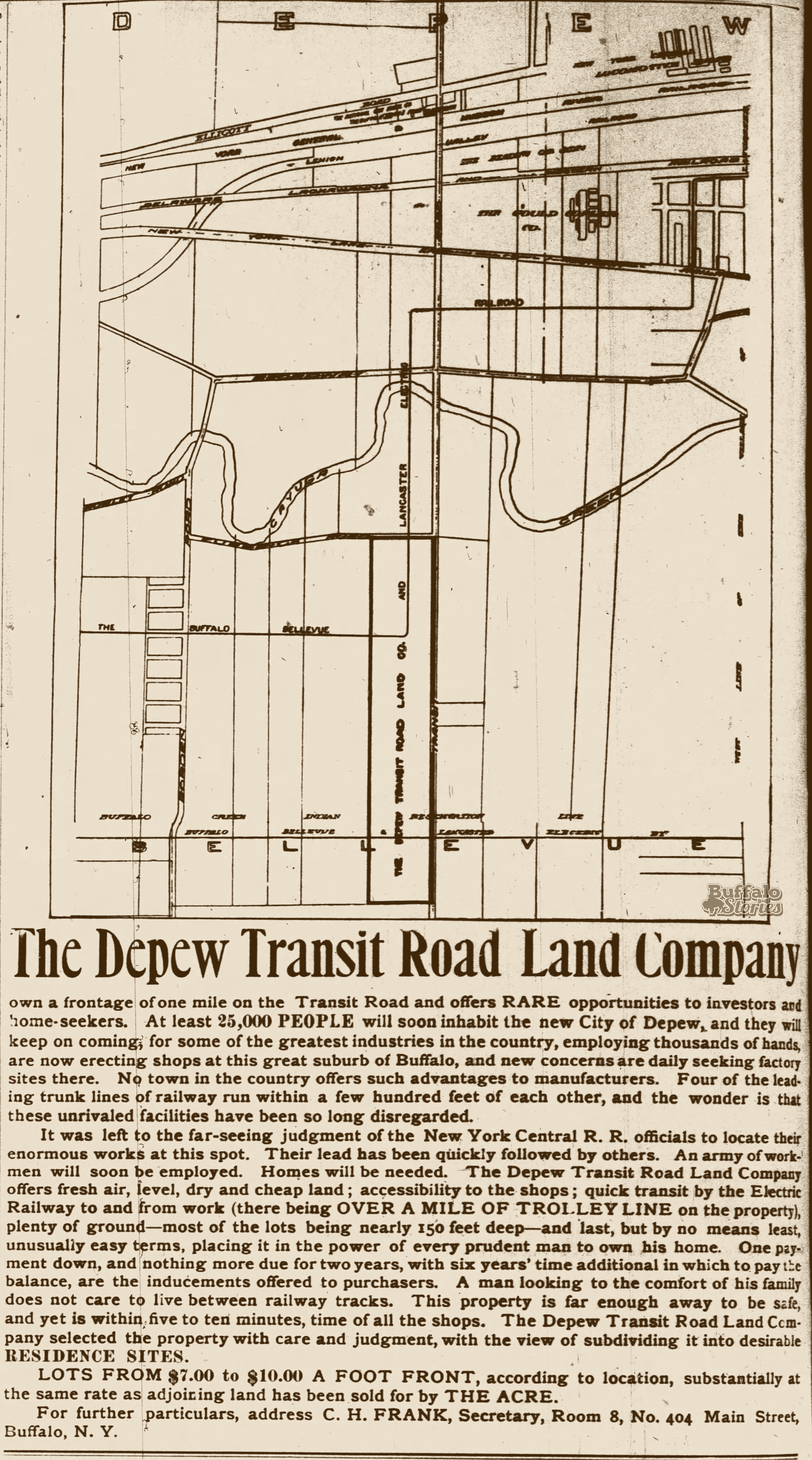 By Steve Cichon
By Steve Cichon
steve@buffalostories.com
@stevebuffalo
Think of a joyful weekend ride down a beautiful little country road.
Now think of a weekend ride down Transit Road.
Driving it today, you might be overwhelmed by the feeling of modern American sprawl, but the road itself was etched into the landscape more than 200 years ago.

Work began in 1799, cutting through the wilderness to create a route from Lake Ontario to Pennsylvania. The route was very close to one traveled by Native Americans from a time before recorded history, but construction followed one of the guidelines on the original Holland Land Co. survey of the area. The “Transit Meridian Line, due north,” which was nothing but an imaginary line on a map, evolved into today’s artery that runs through the center of southern Niagara and northern Erie counties.
The old Iroquois route was well established at what is now Transit and Main, and both the surveying and the road building started off from that spot. It’s been an important intersection for hundreds of years, long before our struggles to get into the proper lane for turning into Bed, Bath and Beyond.

Nature that wasn’t a much of a concern to the native peoples was soon being tamed by European settlers. Fisherman liked the speckled trout they could pull from the Tonawanda Creek, but they didn’t like the rattlesnakes, bears and wolves.

Taming nature also meant development. It was at the junction of the Erie Canal and the Transit Road where Lockport grew in the 1820s.
A few years later and little further south, Catholic missionaries founded “the Parish of the transit” in the wilderness of what is now northern Erie County.
In the 1840s, Adam Schworm built and home and a store near that church, and that part of Transit has been known as “Swormville” or “Swormsville” (depending on who you ask) ever since.
Another boon to the development of Transit Road came in 1893 with the New York Central Railroad’s decision to build 100 acres’ worth of rail sheds and locomotive shops in what would eventually become the Village of Depew.
Land speculators started gobbling up land near Transit Road. “At least 25,000 people will soon inhabit the new City of Depew,” says the 1893 ad for the Depew Transit Road Land Co., “and they will keep on coming.”
In the earliest days of the automobile and “the Sunday drive,” Transit Road was the strip of road where Buffalonians would drive to get away from the hustle and bustle of the city, although even 99 years ago, a writer in The Buffalo Times admonished drivers for not taking it all in.

“The mad motorist will fail to appreciate the continual exhibition of pastoral life led by the farmers along (Transit Road) and will have no eye for the alluring country detail — the superb trees and verdure, nor sense the perfume from the hay field, flowers and sweet grasses.”

Once motoring enthusiasts started driving along Transit Road, farmers started making room for people trying to make a buck on those Sunday drivers.
Public houses, hotels and taverns sprang up with increasing frequency around the intersection of Main Street and Transit Road.
As the early days of the automobile moved into postwar suburban expansion, Main and Transit once again was an early spot for reflective development, culminating with the construction of the Eastern Hills Mall starting in 1969.
Hopefully all this gives you something to ponder the next time a Saturday afternoon Transit Road drive from Genesee Street to Maple Road takes 22 minutes.
